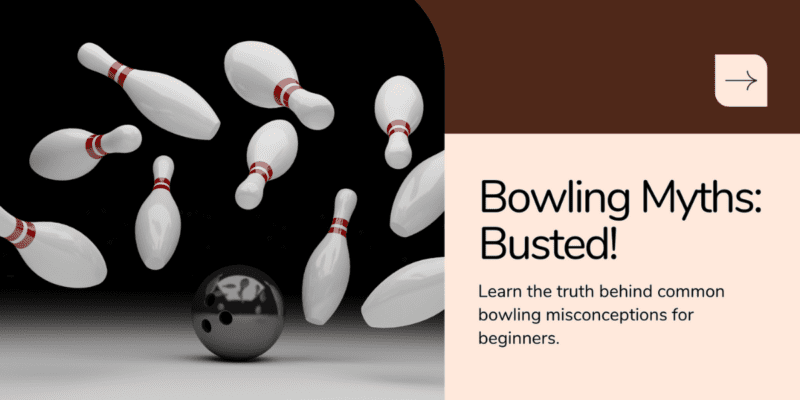Bowling News, Radical Bowling Ball Videos
A Fitting Legacy for Bowling Ball Guru Mo Pinel

by
“Fear of being one of the masses… just another face.”
That’s how Mo Pinel replied to a query about his worst fear in a profile that appeared in the Dec. 20, 1989 edition of the Daily Press in Newport News, Virginia.
There was no reason for Pinel to fret over getting lost in the bowling crowd. As so many people have noted since his passing last Friday in Baton Rouge, Louisiana, Pinel was one of a kind.
Maurice Louis Pinel Jr. was born in 1942 and died from complications of COVID-19.
Pinel was best known for his groundbreaking work in bowling ball core design and drilling techniques, which greatly contributed to the number of honor scores being rolled each season — an increase some labeled as “score inflation.”
Yet as early as 2000, Pinel was strongly suggesting that the so-called “System of Bowling,” implemented by the American Bowling Congress and Women’s International Bowling Congress in 1991, was in need up updating. A task force had been created in 1996 and made recommendations, but nothing had been done in the ensuing four years.
The System of Bowling addressed four areas of concern — the lane surface, the lane condition, the bowling ball and the pin — and in a Bowlers Journal International interview, Pinel opined that the technology of the first three areas had far out-paced that of the fourth.
“First, I should say that the bowling pins manufactured today are totally compliant with the rules,” Pinel told BJI. “But those rules were set when the friction between the ball and the lane surface was at, say, Level B in the ’60s. Now, we’re at Level C with two to four times the friction. That pin is no longer [an adequate] defense against the new environment. I believe every pin manufacturer is compliant with the rules, but it is evident that the standard needs to be adjusted. It’s no longer relevant.”
Pinel acknowledged that he had been “part of the problem” because of the design concepts and technology he had helped introduce to bowling balls. And via countless seminars conducted throughout the country and around the world, he shared his drilling techniques with thousands of ball drillers.
In the close-knit family that is the bowling business, Pinel forged respectful relationships with clients and competitors alike.
“In 1991, I was sitting at a bar in New York at a trade show,” recalled Storm Products co-founder Bill Chrisman in a Facebook post. “[I was] feeling kind of lonely and overwhelmed from all the information that had passed around the hotel for two days. So this guy walks over to me and says, ‘Hi, I’m Mo. Can I buy you a drink?’ We sat at that bar until the bartender asked if we would leave.
“Over the next 20 years, this happened many times in many states and a few [other] countries. I’ve always respected Mo for the impact he had on the world of bowling. He was a very intellectual man and I liked his personality. I will miss him and our talks over a good glass.”
Jeff Ussery recalled his days at Jayhawk Bowling Supply and the nearly every-week calls he’d receive from Pinel, for whom Jayhawk was manufacturing MoRich Determinators and MoRich Fitting Systems. Ussery said that the calls “were always entertaining, very time consuming, and usually had some kind of knowledge within if you knew what to listen for.”
Ussery called Pinel “a great ambassador of bowling, and one of the few people who understood how to market their ideas and thoughts inside this sport, thereby turning [them] into sales.”
Richie Sposato acknowledged that he and Pinel “butted heads over the years,” but described him as “a true bowling industry legend who understood the importance of making bowling fun as well.”
Sposato noted that Pinel’s contributions were not limited to bowling ball design and drilling techniques, but extended to the development of new types of lane finishes with an eye toward optimizing ball reaction and pin carry.
Distributor Mark Buffa described Pinel as “a transparent person who never sugar-coated anything,” and pro shop operator Michelle Rakow noted how Pinel’s business relationships often became personal friendships. In a Facebook post, she thanked Pinel for “calling me from time to time to see how things were going in the pro shop and checking up on me personally.”
Pinel’s career resumé included a stint as a bowling proprietor (Mohawk Lanes in Rome, New York), years of coaching and coaching coaches, and book author (“The See It, Feel It, DO IT! System”).
But his legacy will be as a ball designer for several companies. In 1991, he introduced the AMF Sumo, the first mass-market flaring bowling ball. Six years later, he developed the Hammer 3D Offset for Faball, widely credited as the ball that forevermore changed ball design. At the time of his death, he was affiliated with Brunswick’s Radical brand, and hosted new-ball introductions for Radical via his #MoMonday presentations on YouTube.
Bowl4Life, the scholarship foundation founded by the Chuck Gardner family, has been selected by the Pinel family to develop a scholarship honoring Pinel. In a Facebook post, the foundation noted, “Mo was a long-time part of our life and we considered him family. He believed in us before we believed in ourselves.”
Brian Pinel confirmed the scholarship endeavor in his own Facebook post: “In lieu of flowers, we are pleased to announce we are going to work with the Bowl4Life Foundation in a scholarship fundraiser in memory of Mo. Bowl4Life has agreed to match all donations and will award 100% of the monies collected to the newly formed Mo Pinel Memorial Scholarships.
“Please go to the Bowl4Life website and click the donate button. Leave a note in memory of Mo, and Bowl4Life will combine all notes for our family. Bowl4Life will work on an application process over the next few weeks for the junior bowlers to apply.
“Mo loved working with the junior bowlers, so this will honor his memory. He would be so proud and honored to be part of assisting young people, and he was an avid fan of Bowl4Life. Thank you in advance for helping make this a huge success.”
Not a bad legacy for a guy who feared “being one of the masses.”
more bowling articles you may enjoy
Bob Johnson
Bob Johnson has received more national writing awards than any other bowling writer — close to 70 over the course of his 40-year career. He began at age 16 as a staff writer and then assistant editor for the weekly Pacific Bowler newspaper in his native California, and within three years was writing feature stories for Bowlers Journal. He has written for the magazine ever since, except for a five-year span when he was hired as the founding editor of another magazine. He moved to Chicago in 2000 and spent 13 years in the Windy City, including five as Bowlers Journal’s Editor. In 1975, Johnson received the Robert E. Kennedy Award as California’s top undergraduate high school journalist. Five years earlier, on the lanes, he had shared the Bantam Division Doubles championship in the Orange County Junior Bowling Association Championships. Today, he continues to work full-time for Bowlers Journal as its Senior Editor, to write his popular “Strikes Me” column, and to edit Luby Publishing Inc.’s weekly business-to-business Cyber Report.















Yes Mo Pinel will most certainly be missed. I watched him on Monday’s for a couple of years and always looked for YouTube videos. I found his wisdom very enlightening.
Yes , the Pins are a embarrassment to bowling, they need to be addressed ASAP. Double voided pins , top heavy are a disgrace